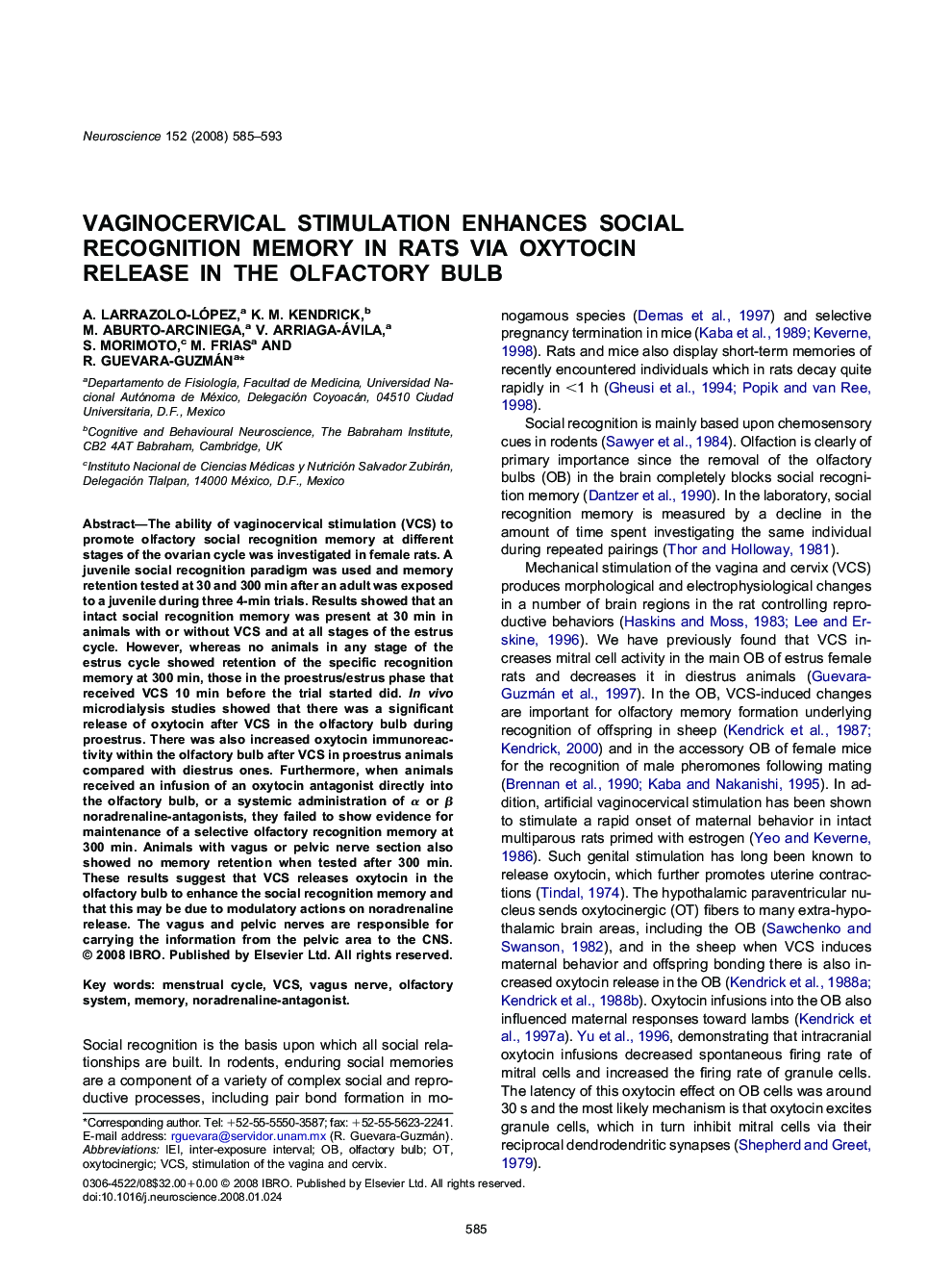| Article ID | Journal | Published Year | Pages | File Type |
|---|---|---|---|---|
| 4340888 | Neuroscience | 2008 | 9 Pages |
The ability of vaginocervical stimulation (VCS) to promote olfactory social recognition memory at different stages of the ovarian cycle was investigated in female rats. A juvenile social recognition paradigm was used and memory retention tested at 30 and 300 min after an adult was exposed to a juvenile during three 4-min trials. Results showed that an intact social recognition memory was present at 30 min in animals with or without VCS and at all stages of the estrus cycle. However, whereas no animals in any stage of the estrus cycle showed retention of the specific recognition memory at 300 min, those in the proestrus/estrus phase that received VCS 10 min before the trial started did. In vivo microdialysis studies showed that there was a significant release of oxytocin after VCS in the olfactory bulb during proestrus. There was also increased oxytocin immunoreactivity within the olfactory bulb after VCS in proestrus animals compared with diestrus ones. Furthermore, when animals received an infusion of an oxytocin antagonist directly into the olfactory bulb, or a systemic administration of α or β noradrenaline-antagonists, they failed to show evidence for maintenance of a selective olfactory recognition memory at 300 min. Animals with vagus or pelvic nerve section also showed no memory retention when tested after 300 min. These results suggest that VCS releases oxytocin in the olfactory bulb to enhance the social recognition memory and that this may be due to modulatory actions on noradrenaline release. The vagus and pelvic nerves are responsible for carrying the information from the pelvic area to the CNS.
